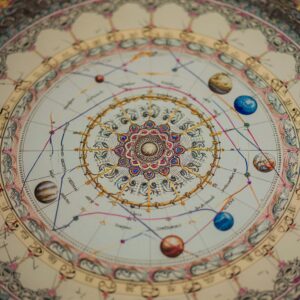The interplay of Cosmic Elements: Planets, Nakshatras, and the Panchang
Cosmic Planets: These refer to the celestial bodies within our solar system, such as Mercury, Venus, Mars, Jupiter, Saturn, Uranus, Neptune, and the dwarf planet Pluto. In astrology, these planets are believed to have an influence on human life based on their positions at the time of a person’s birth.

Nakshatras: In Hindu astrology, Nakshatras are lunar mansions or specific sectors of the sky through which the moon passes during its monthly orbit around Earth. There are 27 Nakshatras, each associated with certain qualities and ruling deities. These Nakshatras are used in astrology to determine favorable timings for various activities and events.
Panchang: Panchang is a Hindu calendar that incorporates various elements such as Tithi (lunar day), Vara (weekday), Nakshatra (lunar mansion), Yoga, and Karana. It provides information about auspicious and inauspicious timings, planetary positions, eclipses, and other celestial events. Panchang is consulted for planning important life events, religious ceremonies, and daily activities according to astrological considerations.
Together, these elements—cosmic planets, Nakshatras, and the Panchang—form an integral part of various cultural, religious, and astrological practises, guiding individuals in decision-making, rituals, and timing of events based on celestial influences and astronomical observations.







